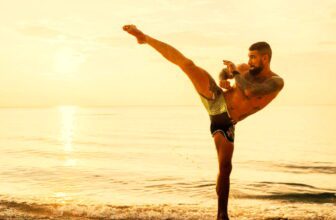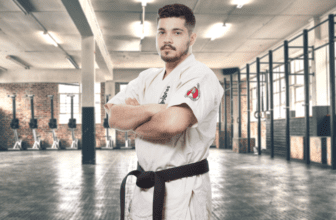Karate is indeed a martial art that can be used for self-defense and places a strong emphasis on physical and mental discipline. There are different types of karate that one can choose to learn, including Shotokan, Goju-ryu, Uechi-ryu, Wado-ryu, and Shorin-ryu. Each type of karate has its own defining features and techniques, making it a versatile discipline for self-defense.
The effectiveness of karate for self-defense ultimately depends on the style and training of the practitioner. Some styles, like Kyokushin and Ashihara, are recommended for individuals looking to develop combat skills and real-world self-defense techniques. These styles focus on full-contact sparring and practical application of techniques, preparing individuals for real-life self-defense scenarios.
Moreover, karate can also be a vigorous form of exercise that supports weight loss and muscle building. The intense physical conditioning involved in karate training helps individuals develop strength, flexibility, and endurance.
It’s important to note that karate originated in Asia, drawing influences from Chinese and Indian self-defense styles. Over time, numerous styles and variations of karate have evolved and are practiced today. Each style offers its own unique approach to self-defense, giving individuals plenty of options to choose from based on their preferences and goals.
When it comes to self-defense, it is crucial to understand the difference between sports karate and traditional Okinawan Karate. While sports karate may focus more on competition and forms, traditional Okinawan Karate was specifically developed for self-defense purposes. This distinction is vital for individuals seeking practical self-defense skills.
Ultimately, the quality of the instructor plays a significant role in determining the effectiveness of karate for self-defense. Regardless of the specific style of karate one chooses to learn, finding a knowledgeable and experienced instructor who emphasizes practical self-defense techniques is key. Their guidance and expertise will greatly contribute to one’s ability to effectively use karate in self-defense situations.
Types of Karate
Karate is a diverse martial art with various styles and techniques that differ in their approaches and applications. Some of the prominent styles of karate include Shotokan, Goju-ryu, Uechi-ryu, Wado-ryu, and Shorin-ryu. Each style has its unique characteristics and focuses on specific aspects of self-defense.
- Shotokan Karate: Emphasizes long, linear movements and powerful strikes.
- Goju-ryu Karate: Incorporates circular and soft/hard techniques, focusing on close-range combat.
- Uechi-ryu Karate: Based on Chinese martial arts, emphasizes conditioning and strong stances.
- Wado-ryu Karate: Combines karate techniques with principles of Jujutsu and Taekkyon.
Shorin-ryu Karate: Known for its quick, fluid movements and emphasis on speed and agility.
Effectiveness of Karate for Self-Defense
The effectiveness of karate for self-defense depends on several factors, including the style of karate and the training of the practitioner. Some styles, like Kyokushin and Ashihara, prioritize practical combat skills and full-contact sparring, making them more suitable for self-defense purposes.
Karate training focuses on developing strong strikes, kicks, and blocks, along with footwork and evasive techniques. However, it is crucial to understand the distinction between sports karate and traditional Okinawan Karate. While sports karate emphasizes scoring points in a controlled, rule-based environment, traditional Okinawan Karate was specifically developed for real-world self-defense.
Key Point: While sports karate can assist in building discipline and athleticism, its effectiveness for self-defense may be limited due to its emphasis on rule-bound competitions.
Recommended Karate Styles for Combat Skills
For those aspiring to develop strong self-defense skills, training in styles such as Kyokushin and Ashihara is highly recommended. These styles emphasize practical combat techniques and full-contact sparring, providing a realistic training environment that simulates real-life self-defense situations.
Kyokushin karate, for example, is known for its rigorous training methods and demanding physical conditioning. It includes bare-knuckle sparring, kicks to the legs, and full-contact striking, which helps practitioners develop both physical and mental toughness.
Ashihara karate, on the other hand, focuses on effective self-defense techniques and a triangular footwork system that allows practitioners to maintain distance and control during encounters. It emphasizes practical application and adaptability in real-world situations.
Physical Fitness Benefits of Karate
In addition to self-defense skills, karate training offers an array of physical fitness benefits. The rigorous nature of karate workouts makes it a highly effective form of exercise for those seeking weight loss and muscle toning.
Karate involves explosive movements, dynamic kicks, and strikes that engage multiple muscle groups, leading to strength and power development. It also improves cardiovascular endurance through constant movement and quick bursts of intense activity.
Furthermore, karate training requires flexibility, agility, and coordination, resulting in improved body control and balance. Regular practice of karate can lead to decreased body fat, increased muscle mass, and enhanced overall body composition.
History and Influence of Karate
Karate originated in Asia and was heavily influenced by Chinese martial arts, as well as Indian self-defense styles. It was developed in the Ryukyu Kingdom, present-day Okinawa, and later gained popularity in mainland Japan and the rest of the world.
Over time, various styles and schools of karate emerged, each with its distinct techniques and philosophies. Today, there are numerous types of karate being practiced worldwide, reflecting the evolution and adaptation of the martial art in different regions and cultures.
Instructor Quality and Self-Defense in Karate
When considering karate for self-defense purposes, the quality of the instructor becomes paramount. A skilled and experienced instructor can teach effective self-defense techniques, ensure proper training methods, and create a safe and supportive environment for students.
While the specific style of karate is important, it is the instructor’s knowledge and ability to impart practical self-defense skills that truly matters. Therefore, individuals seeking to learn karate for self-defense should thoroughly vet potential instructors and select someone with expertise in real-world self-defense scenarios.
Key Point: The quality of the instructor ultimately influences the effectiveness of karate as a self-defense tool, irrespective of the style being taught.
In conclusion, karate can be a valuable martial art for self-defense when practiced under the right conditions. Some styles, such as Kyokushin and Ashihara, prioritize combat skills and full-contact sparring, making them particularly effective in real-world scenarios. Additionally, karate training offers numerous physical fitness benefits, including increased strength, cardiovascular endurance, flexibility, and body composition improvements. Ultimately, the effectiveness of karate for self-defense is enhanced by the instructor’s quality, as they play a crucial role in teaching practical self-defense techniques and creating a safe and supportive training environment.
1. Understand the principles: Karate can be effective for self-defense if you have a solid understanding of the fundamental principles. Focus on techniques that are practical and applicable in real-life situations, such as strikes, blocks, and effective footwork.
2. Develop speed and agility: Speed and agility are crucial in self-defense situations. Practice drills and exercises that enhance your speed and agility, allowing you to react quickly and effectively to an attacker’s movements.
3. Learn to defend against common attacks: While karate training typically emphasizes striking techniques, it is essential to learn how to defend against common attacks such as grabs, chokes, and holds. Being able to neutralize an assailant’s initial attack can significantly increase your chances of escaping unharmed.
4. Train in realistic scenarios: Self-defense situations are unpredictable and chaotic, so it’s important to train in realistic scenarios. Incorporate drills that simulate real-world situations, including different environments, multiple attackers, and varying levels of intensity and aggression.
5. Practice situational awareness: Self-defense starts with being aware of your surroundings. Develop your situational awareness skills by regularly scanning your surroundings, identifying potential threats, and maintaining a confident and alert mindset. Learning to recognize warning signs and avoiding potentially dangerous situations is as important as the physical aspect of self-defense.







